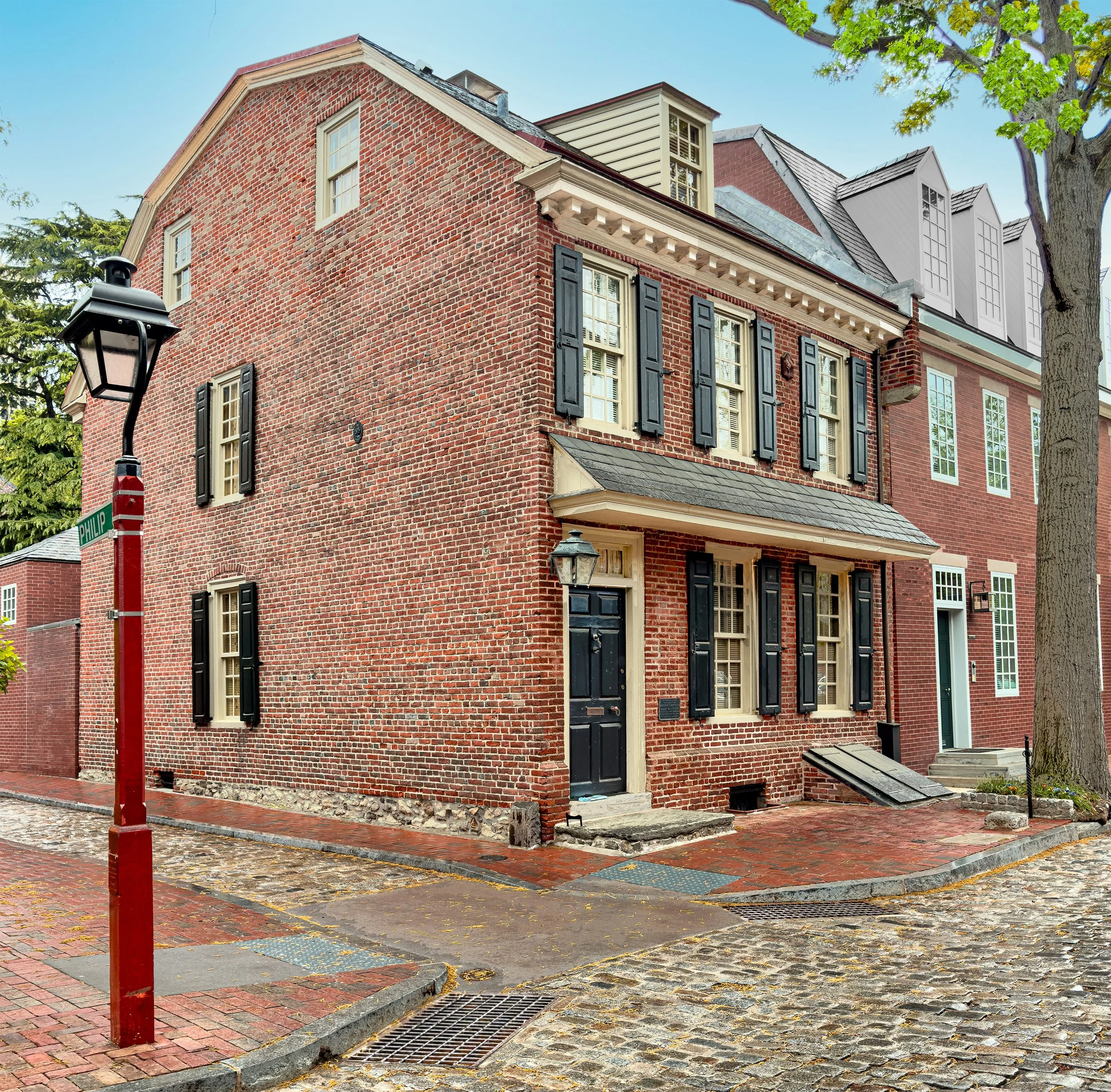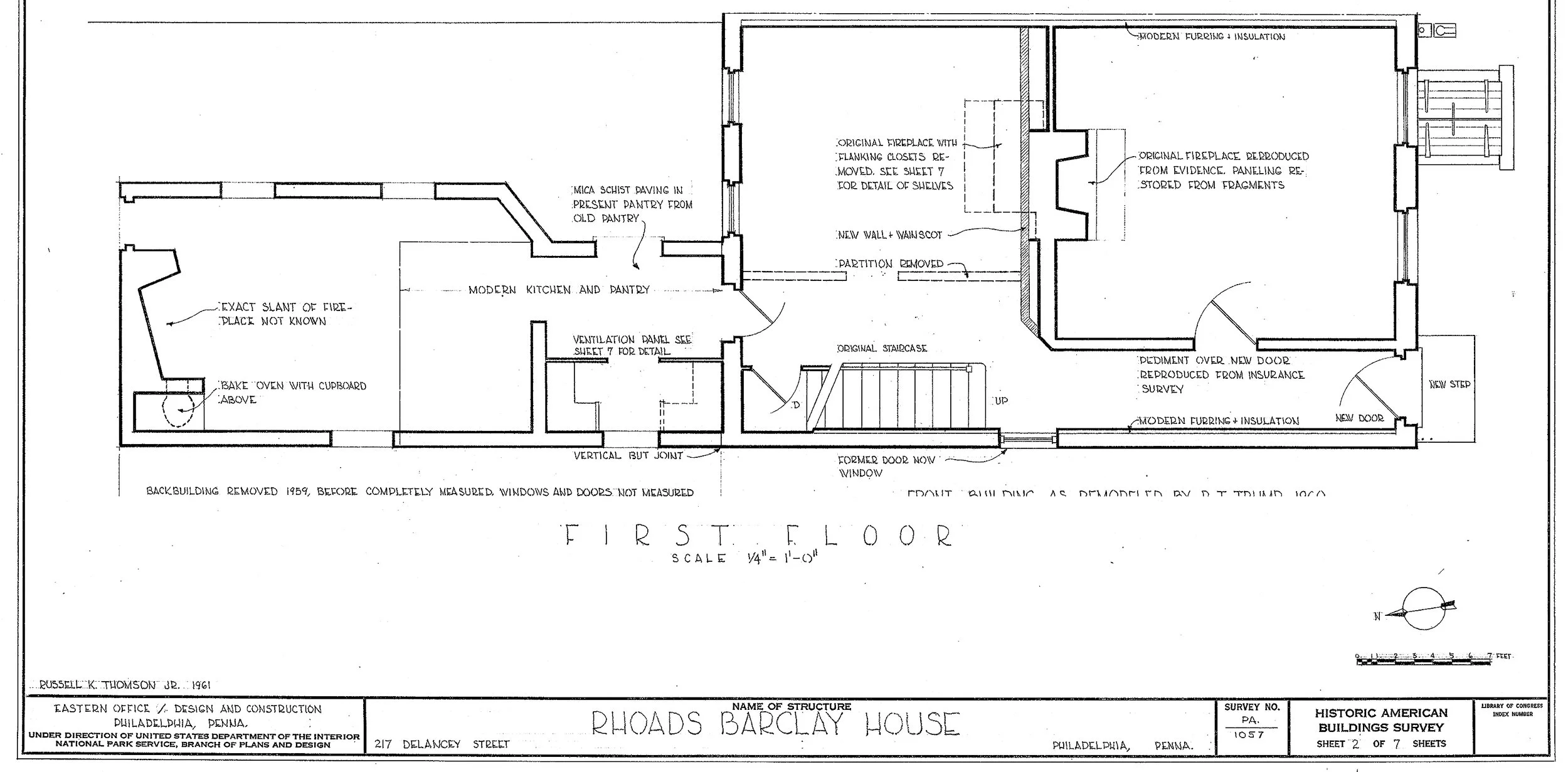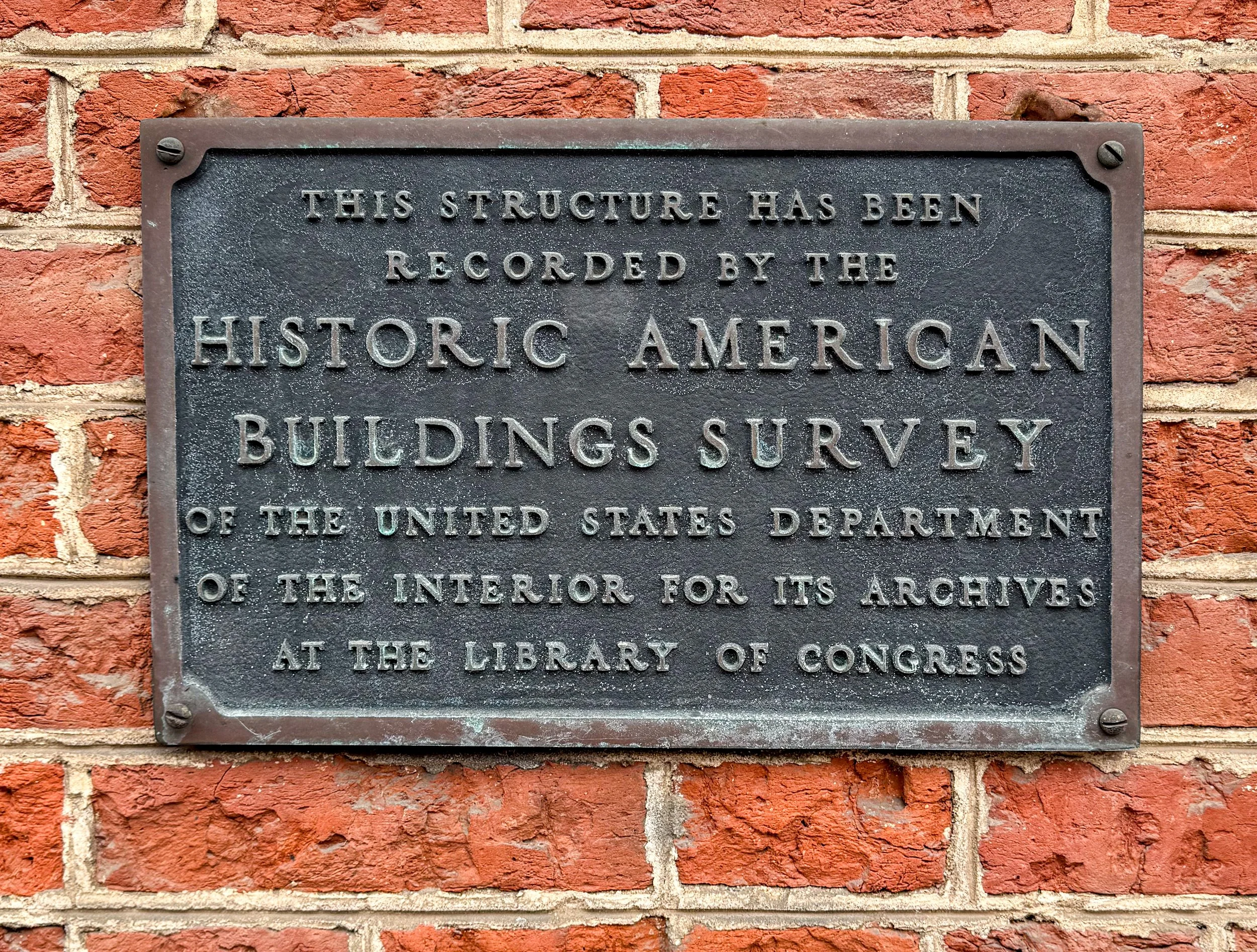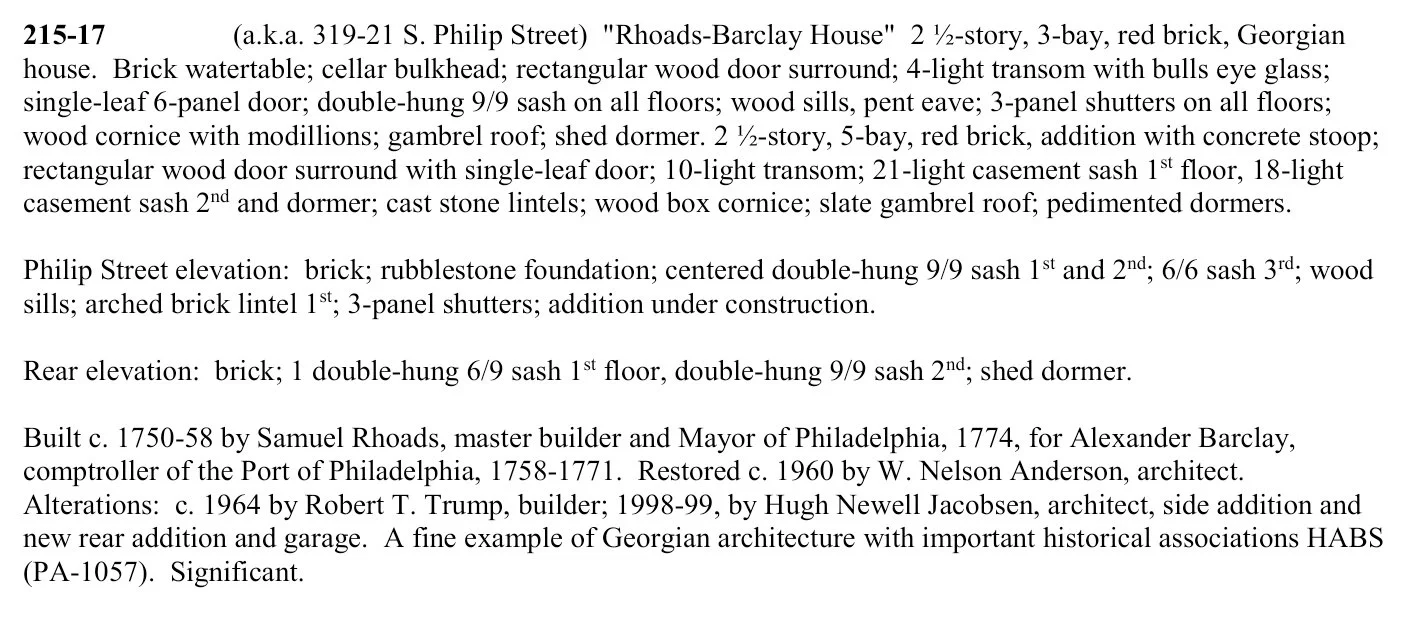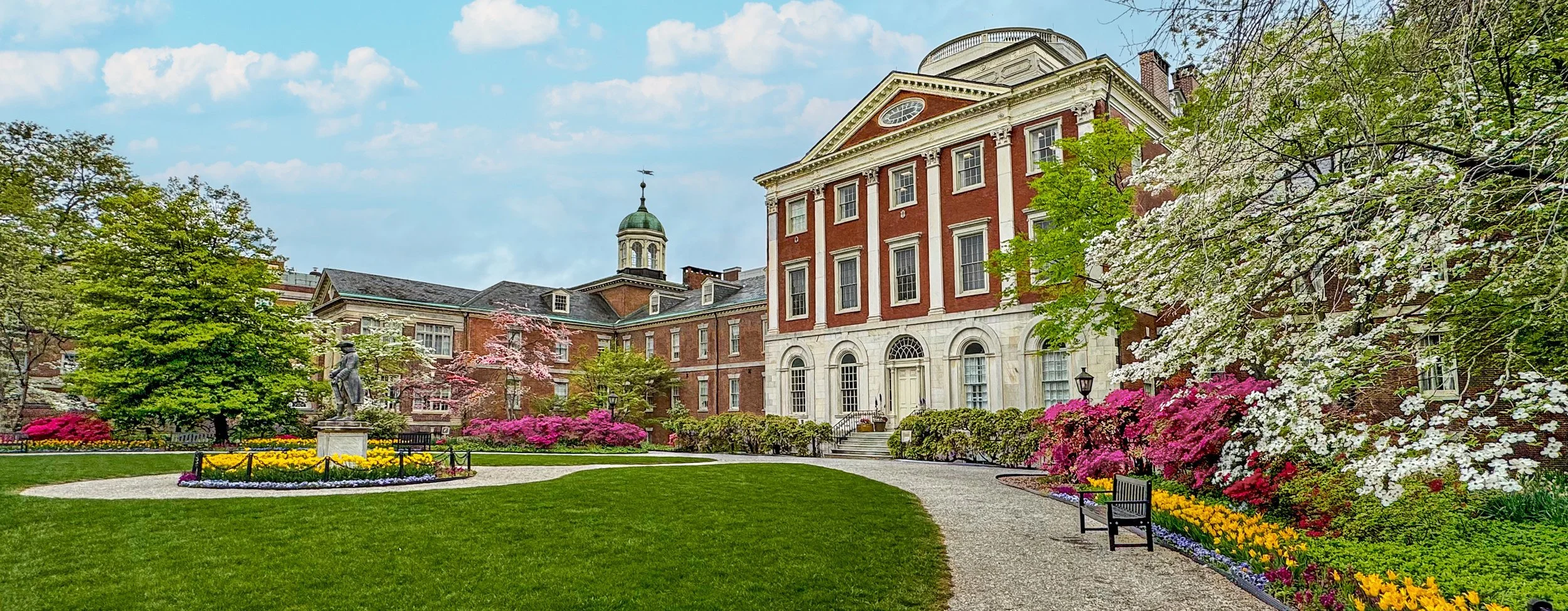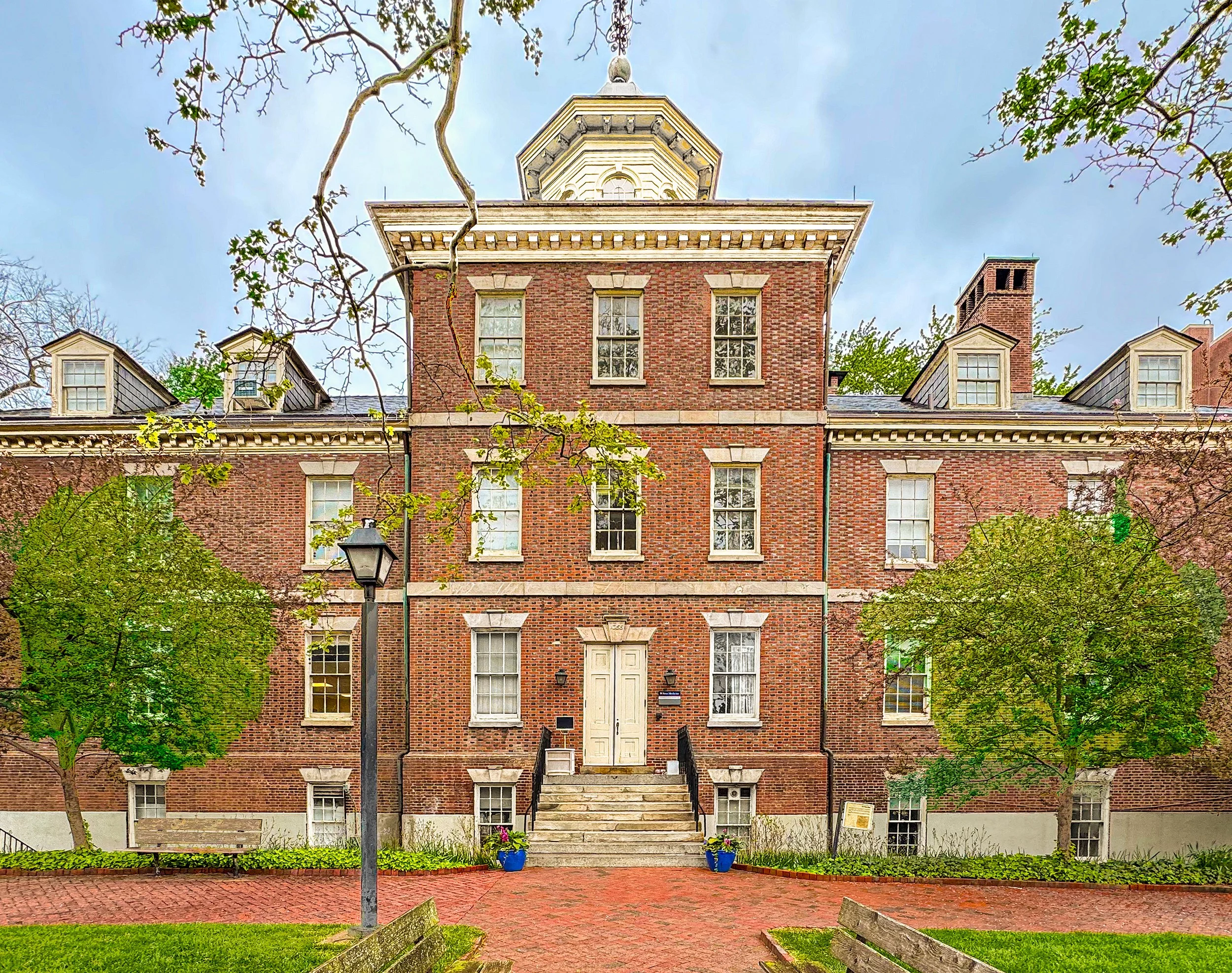Historic Quaker Houses of Philadelphia
Buildings by Quaker Architect Samuel Rhoads
The Rhoads-Barclay House
217 Delancey Street
Built: ca. 1750
Master builder Samuel Rhoads built this house for the controller of the port of Philadelphia, Alexander Barclay, and wife Rebecca Barclay. This 200 block of Delancey Street is among the best preserved blocks of Society Hill. Image source: Lee J. Stoltzfus
Quaker builder Samuel Rhoads left a remarkable legacy of colonial architecture in Philadelphia. He built this house for Robert and Rebecca Barclay. Later, in 1785, Williamina Bond purchased the house. She was the widow of Dr. Phineas Bond, a prominent physician who helped organize Philadelphia’s Pennsylvania Hospital. In 1815 banker / real-estate investor Stephen Girard purchased the house. Robert T. Trump restored and remodeled the house in 1960 for owners F. Otto Haas and Dorothy W. Haas of Ambler.
Floorplan of the Rhoads-Barclay House
In 1961, During its Restoration:
Above: The floorplan is a classic Philadelphia side-hall design, with a kitchen in the backbuilding. Image source: Historic American Buildings Survey, Library of Congress
The Rhoads-Barclay House Description
Philadelphia Register of Historic Places:
Image source: Philadelphia Register of Historic Places
Preservation of the Rhoads-Barclay House
Restored by F. Otto Haas and Dorothy W. Haas:
Above: F. Otto Haas and Dorothy “Dophie” Willaman Haas in 1983. In the 1960s they restored the Rhoads-Barclay House for their city residence. Photograph source: Morris Arboretum and Gardens.
F. Otto Haas and Dorothy “Dophie” Willaman Haas restored the Rhoads-Barclay home in the 1960s. These philanthropists were passionate preservationists. They were involved with urban renewal and other preservation efforts in the Philadelphia area.
The Haas family founded the William Penn Foundation. In 2023, this foundation awarded $153 million in grants to local initiatives involving education, arts and culture, public space, environmental protection, etc.
F. Otto Haas (1915-1994) was a director of the Philadelphia Historic Preservation Corporation, and of the National Trust for Historic Preservation. For his dedication in this field, Preservation Pennsylvania established the F. Otto Haas Award, the state’s highest honor in historic preservation.
. While the Haas family does not have Quaker origins, the name of their William Penn Foundation clearly does.
1976: U. S. President Gerald Ford Stayed in this House
During his Bicentennial Visit to Philadelphia:
Image source: FordLibraryMuseum.gov
Architect Samuel Rhoads’ Masterpiece
The Pennsylvania Hospital in Philadelphia:
Architect Samuel Rhoad created the original architectural design of this hospital. He oversaw the construction of the first section, today’s east wing. He completed that section in 1755. He did not live long enough to see the completion of the central section or west wing. His plans for those sections were somewhat altered, but the hospital’s overall design remains close to his original plan.
Builders completed the west wing (above left) in 1797. The main central section was completed in 1804. Hospital images source: Lee J. Stoltzfus
A William Penn Statue in front of the Hospital
Donated by William Penn’s Grandson in 1804:
Above: William Penn’s grandson, John Penn, discovered this statue of his famous grandfather in a London antiques shop. He presented it to the hospital in 1804, when this building on Pine Street was completed.
William Penn points to his Pennsylvania Charter of Privileges. British sculptor John Cheere created the statue in 1774 for Francis Dashwood, owner of West Wycombe Park in Buckinghamshire, England.
Above: The hospital’s east wing, completed by Architect Samuel Rhoads in 1755.
Above: An addition to the hospital’s east wing.
Architect / builder Samuel Rhoads made major contributions of Philadelphia’s civic life. He was the 77th mayor of the city. In 1774 he was chosen speaker of the Provincial Assembly. He also served as a delegate to the First Continental Congress. He was the only member of the Carpenters’ Company at that congress. In 1761 he won election to the Pennsylvania Assembly representing Philadelphia.
Rhoads was a founder or director of many Philadelphia civic and cultural organizations: The Union Fire Company, The Philadelphia Contributionship, The American Philosophical Society, The Library Company of Philadelphia, and Pennsylvania Hospital.

